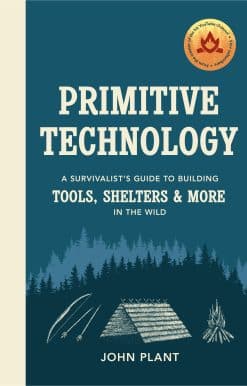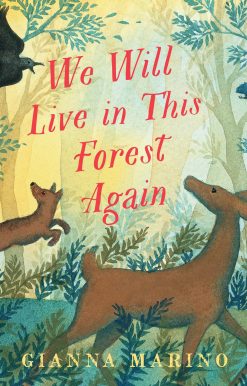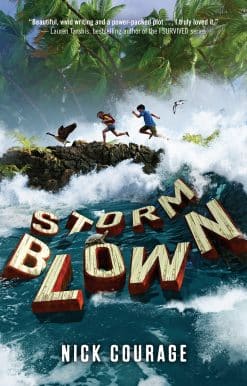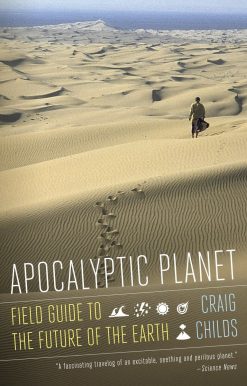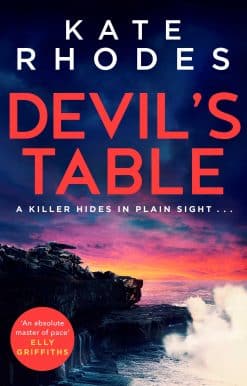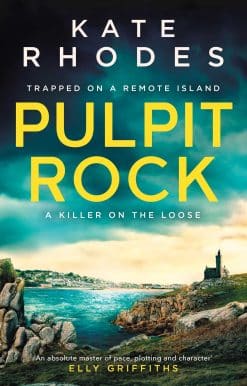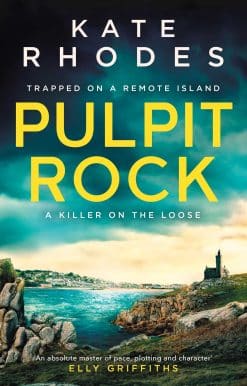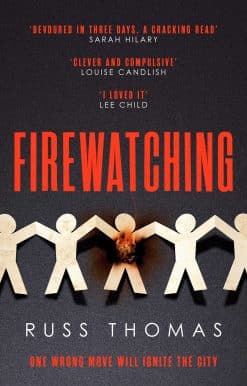wild fire
Showing 1–12 of 17 resultsSorted by latest
-
On backorder 2-5 Weeks to Arrive
This Poison Will Remain
Weight 0.33 kg Dimensions 2.5 × 12.9 × 19.8 cm by Format Paperback
Language Pages 416
Publisher Year Published 2020-8-6
Imprint Publication City/Country London, United Kingdom
ISBN 10 1784708291
Review Quote Thrilling… Breathtakingly original… A wildly inventive plot that puts Vargas’s real-life expertise (she is an archaeologist) to brilliant use
Other text I so enjoyed This Poison Will Remain, real vintage Vargas: playful, thought-provoking, a total delight. And beautifully translated. Adamsberg is one of my favourite detectives
Series Paperback
8.99 JOD -
On backorder 2-5 Weeks to Arrive
The Art of Fire: Step by step guide to starting, building and handling fires
Weight 0.734 kg Dimensions 2.5 × 16.2 × 24.2 cm by Format Hardback
Language Pages 224
Publisher Year Published 2017-11-2
Imprint Publication City/Country London, United Kingdom
ISBN 10 1780897669
About The Author Daniel Hume is an instructor at Ray Mears' Woodlore School of Wilderness Bushcraft, having served since 2006, and is an expert on bush craft and the art of survival in the wild. The art of making and keeping a fire has been Daniel’s greatest passion from a young age. Daniel has made it his mission to travel the world and learn first-hand how tribesmen in remote places build fires key to their survival and existence. In his quest he has mastered some of the most extraordinary native fire-making techniques from across the globe.
Review Quote Beautiful book…Cracking photos…Daniel Hume’s book is part manual, part art, part spiritual movement
Other text enthusiastic exploration of fire
Hardback
20.00 JOD -
On backorder 2-5 Weeks to Arrive
Primitive Technology: A Survivalist’s Guide to Building Tools, Shelters & More in the Wild
Weight 0.587 kg Dimensions 2.2 × 16.2 × 23.7 cm by Format Hardback
Language Pages 192
Publisher Year Published 2019-10-31
Imprint Publication City/Country London, United Kingdom
ISBN 10 1529104599
About The Author JOHN PLANT is the creator of Primitive Technology, the viral YouTube channel with more than 9 million subscribers around the globe. A self-taught primitive technician, John has apprenticed as a soil tester, in a pottery shop, and at a powder coating factory. Since 2015, he has been running his YouTube channel from Far North Queensland, Australia, where he was born and raised.
Other text JOHN PLANT is the creator of Primitive Technology, the viral YouTube channel with more than 9 million subscribers around the globe. A self-taught primitive technician, John has apprenticed as a soil tester, in a pottery shop, and at a powder coating factory. Since 2015, he has been running his YouTube channel from Far North Queensland, Australia, where he was born and raised.
Hardback
22.00 JOD -
On backorder 2-5 Weeks to Arrive
English Pastoral: An Inheritance – The Sunday Times bestseller from the author of The Shepherd’s Life
Weight 0.229 kg Dimensions 1.7 × 13 × 19.8 cm by Format Paperback
Language Pages 304
Publisher Year Published 2021-9-2
Imprint Publication City/Country London, United Kingdom
ISBN 10 0141982578
About The Author James Rebanks is a farmer based in the Lake District, where his family have lived and worked for over six hundred years. His No.1 bestselling debut, The Shepherd's Life, won the Lake District Book of the Year, was shortlisted for the Wainwright and Ondaatje prizes, and has been translated into sixteen languages. His second book, English Pastoral, was also a Top Ten bestseller and was named the Sunday Times Nature Book of the Year. Heralded as a 'masterpiece' by the New Statesman, it won the Wainwright Prize for Nature Writing and was named Fortnum and Mason Food Book of the Year; it was also shortlisted for the Orwell and Ondaatje prizes, and longlisted for the Rathbones Folio award.
Remarkable … A brilliant, beautiful book … Eloquent, persuasive and electric with the urgency that comes out of love
Other text It is a book full of love: of his grandfather, of his children and of the Lake District valley where he lives and farms … Some books change our world. I hope this turns out to be one of them.
Paperback
10.99 JOD -
On backorder 2-5 Weeks to Arrive
We Will Live in This Forest Again
Weight 0.48 kg Dimensions 1.27 × 26.17 × 26.42 cm by Format Hardback
Language Pages 40
Publisher Year Published 2020-10-6
Imprint For Ages P-3
Publication City/Country USA
ISBN 10 0823446999
About The Author Gianna Marino has written and illustrated numerous articles for travel and leisure magazines. Her children's books include Zoopa: An Animal Alphabet, One Too Many, Meet Me at the Moon, Too Tall Houses, Following Papa's Song, and If I Had a Horse. She also created the illustrations for Chelsea Clinton's Don't Let Them Disappear. Though she still wanders the world, Gianna now lives in Northern California and works full-time writing and illustrating.
★ "The poetic text is powerful and effective at building tension and then providing hope. The color palette perfectly conjures the before, during, and after of the fire while Marino’s lyrical text from the deer’s view point gives it context. It is a potent combination." —School Library Journal, Starred Review ★ "Marino’s story poignantly describes a forest fire from the perspective of a deer living in the woodlands. . . . As the pages turn, evocative gouache paintings silhouetting animals and tangled tree branches shift movingly in hue from green to orange to charred black, then to the cooling blue of rain and the green of new growth. The author’s afterword shares her experiences with wildfires alongside wildfire facts."—Publishers Weekly, Starred Review ★ "Inspired by her own experiences in the 2017 fires in California, Marino tells this story in the nostalgic but also hopeful voice of one of the forest-dwellers . . . These double-page spreads have the translucence of watercolors and constantly change colors. The yellows and greens of the forest are overtaken by fiery reds and oranges, which turn to sooty gray, then warm brown, with, finally, shoots of green. Reassurance about the resilience of the natural world."—Kirkus Reviews, Starred Review ★ "Marino’s strong yet delicate paintings feature overlapping layers of luminous colors: tranquil blues and greens at the beginning, yellows and flaming reds when the fire takes hold, brownish grays and black afterwards, and in the future, greens and blues again. Creating a mood as well as telling a story, the writing is spare, precise, and evocative." —Booklist, Starred Review "[T]imely and striking . . . Marino’s driving text is filled with descriptive verbs—the fire snaps and swallows—and her taut sentences pack a punch"—The Horn Book
Hardback
15.00 JOD -
On backorder 2-5 Weeks to Arrive
Ever Faithful: A Vintage National Parks Novel
Weight 1.78 kg Dimensions 2.39 × 13.72 × 2.83 cm PubliCanadation City/Country USA
by Format Paperback
Language Pages 352
Publisher Year Published 2019-6-18
Imprint ISBN 10 0735289581
About The Author KAREN BARNETT, author of Mistaken, Out of the Ruins, and Beyond the Ashes, is a former park ranger. She worked as a ranger naturalist and outdoor educator at Northwest Trek Wildlife Park, Silver Falls State Park, and Mount Rainier National Park. When not writing, Karen enjoys photography, hiking, and public speaking. She lives in Oregon with her family.
“If you haven’t yet discovered Karen Barnett’s Vintage National Parks novels, Ever Faithful is a great place to start. Vividly set amid the stunning beauty of Yellowstone’s bubbling hot springs, forested mountains, and thundering waterfalls, Ever Faithful celebrates the history of one of the US’s oldest national parks. It provides a fascinating glimpse into the workings of the Civilian Conservation Corps of the 1930s, giving a time of national crisis the immediacy of heart and hope. Elsie, Nate, and the whole cast of characters had me caring, cheering, and second-guessing as a suspenseful plot and engaging prose kept the pages turning. Ever Faithful will delight fans of Karen’s other National Parks novels and new readers alike.” —Lori Benton, author of Burning Sky, The King’s Mercy, and other historical novels “Karen Barnett captures the lively time and place of Yellowstone in the 1930s in this charming and wholesome love story. Firefighting CCC crews and hardworking pillow punchers (housekeepers in Yellowstone-speak) live, work, and play in the national park while learning to trust themselves and their faith to make life-changing decisions. This book made me want to go to a dance in the now-demolished Canyon Hotel, take a ride in a yellow bus driven by a ‘jammer,’ and wander around Mammoth hoping to run into Herma Baggley, Yellowstone’s first female interpretive ranger.” —Alicia Murphy, park historian at Yellowstone National Park “With just the right touch of mystery and romance, Karen Barnett brings 1930s historic Yellowstone National Park to life in her new novel, Ever Faithful. You’ll fall in love with her strong yet vulnerable hero, Nate Webber, who struggles to overcome his hidden challenges, and you’ll want to cheer for her spunky heroine, Elsie Brookes. Karen’s background as a park ranger and her skillful research bring richness and depth to this delightful and inspiring story. Highly recommended!” —Carrie Turansky, award-winning author of No Ocean Too Wide and Across the Blue “I loved, loved, loved Karen Barnett’s Ever Faithful! Set in iconic Yellowstone National Park during the Depression, this story offers high stakes, rugged romance, and a mystery with a twist. Ever Faithful is as wonderful as the wonderland it’s set in. Thank you, Karen, for a fantastic read!” —Leslie Gould, Christy Award–winning and best-selling author of over thirty novels, including A Faithful Gathering
Excerpt From Book April 1933Yellowstone National Park, WyomingElsie closed her eyes for a moment and breathed in the steamy air, imagining she stood beside Grand Prismatic Spring instead of the massive laundry boiler in the back of the Mammoth Hot Springs Lodge. She tucked a damp curl behind her ear before loading another stack of folded bedsheets and towels onto the molly cart. After pushing it through the swinging doors, she rolled the cart down the wooden ramp, the outside air a welcome respite. Two more summers—three at most. That’s all it would take.Mary stood waiting, fiddling with the pink kerchief protecting her pale-blond hair. “There you are. If we get these last housekeeping cabins finished in time, we can meet Hal and Bernie at the cafeteria for lunch.” She flashed a smile at Elsie. “You’ll come, won’t you?”Elsie guided the cart’s wheels through the icy slush on the sidewalk. “You’ve only been back in Yellowstone two days, and you’re already angling for dates? I thought you told me you weren’t seeing pack rats anymore.”Pack rats, pillow punchers, pearl divers—the concession staff had a language all its own, and it all sounded like more laughs than being boring old porters, maids, and dishwashers. The rangers lumped the lot of them together, calling them all savages. No one could remember how the ridiculous name was chosen, but it had stuck for close to fifty years already.“Hal’s been promoted to front desk at the hotel—hadn’t you heard? And though he’s hardly the man of my dreams, I don’t see any better choices around here at the moment.” Mary leaned in with a conspiratorial air. “I hear the new gear jammers are coming in a couple of weeks. They always hire the best-looking fellas to drive the tour buses.”“That’s probably why the jammers are notorious for having a girl at every stop.” Elsie veered left to avoid a puddle. “I’d like to join you for lunch, but I need to run home and check on Mama. I’ll be back right after, and we can fold the rest of the sheets.”“I’ve been meaning to ask how she is. Your last two letters didn’t sound promising.”A knot formed in Elsie’s stomach. “She had a few bad spells this winter. The doctor says it’s her heart. He wants her to rest more.”“Has she had heart problems before?”“She had rheumatic fever as a child.” Elsie tightened her grip on the cart handle. “But I’ve never seen her like this.”“I’m sorry to hear that. She’s like a second mother, not just to me, but to all the pillow punchers.” She unlocked the cabin door and pushed it open. “I suppose it was a good thing you were here to help and not off at college with the rest of us.”Elsie had told herself the same, though it did little to ease the sting of being left behind. “When does Rose arrive, do you know? I’ve missed her.”“Around the same time as the jammers, I believe.” Mary grabbed Elsie’s hand and squeezed. “I’m glad I came early. We’ll be the three musketeers for at least one more summer. Who knows where Rose and I will go after graduation?” She heaved a sigh that stirred the dusty air in the room. “Oh, my. This cabin looks worse than the last one. How is that possible? Ugh, the smell.”“That’s what happens when you latch the door and leave it abandoned for months on end.” She understood too well. Elsie reached for the bottle of vinegar and a handful of newspapers. “I’ll start on the glass. You can knock down the cobwebs.”Mary wrinkled her nose and lifted the broom. “If I find any spiders, it’ll be up to you to dispatch them.”As Elsie scrubbed the veil of dirt from the panes, sunlight filtered into the tiny space and revealed a fine layer of dust coating the room. It was the maids’ job to refresh the old cabins, just like spring renewed the world each year, and prepare for the visitors to come.She’d continue making beds and sweeping floors until she had enough money for the teacher program at the University of Montana. She’d dreamed of being a teacher since she was little, and spending her winters helping at the school in Gardiner, just outside the park’s northern boundaries in Montana, had only deepened the desire. Every new student arrived with potential hidden inside, like the seeds sealed up in the cones from the lodgepole pine trees. It was her job to help them find it.After sweeping and dusting, Mary tucked the crisp white sheets around the mattress and patted the top. “I think we’re almost done here. Are you sure you can’t join us for lunch? Hal’s brother will be odd man out if you don’t come.”“Bernie is an odd duck, no matter what I do.” Elsie shoved the dresser back in place after cleaning behind it. “Of course, I’m no catch myself.” Her hand went to her collar out of habit, her fingers checking that the blouse was buttoned all the way to the neck.Mary straightened, her eyes darkening. “Bite your tongue, Elsie Brookes. Any man would count himself lucky to earn your affection. You just don’t grant it easily.” She leaned on the broom. “Maybe this summer we’ll both find nice boys to take us away from all this.”“Take us away? Why would anyone want to leave?” Elsie glanced out the open door toward the distant springs, the late morning sunshine casting a golden glow over the rising steam. If she could secure a teaching position in Gardiner, she would stay forever.“You’ve got a classic case of park fever. You should just marry a ranger and get it over with.” Mary dropped her broom and dustpan into the cart. “What about the new fella? He’s a little quiet, but he looks like a movie star. What was his name?”“Teddy Vaughn.” Elsie managed to speak his name without her voice wobbling. The first time she’d encountered the brown-eyed ranger, she’d somehow lost all ability to string words together or even swallow for a heady moment. But she couldn’t let her heart go there. No one would ever want her in that way. “I’m dedicating my life to education; you know that. I’m not looking to get married.”“I’ll never understand you.” Her roommate wrinkled her nose. “Why waste time on other people’s children when you can have ones of your own? You and Ranger Vaughn would make beautiful babies.”Elsie couldn’t help giggling at Mary’s silliness. Just having her friend back in the park made everything brighter. “Why don’t you head off to meet the boys for lunch? I can finish the last cabin.”Mary brightened. “Really? But what about your mother?”“I’ll still have time to check in. Go have fun.”Her friend tore off her kerchief and fluffed her hair. “You’re the best, Els. I’ll give Bernie a peck on the cheek from you.”“Don’t you dare.”Elsie made short work of the last cabin and then pointed the molly cart in the direction of the laundry. A small herd of elk grazed on the green lawn surrounding the lodge. A cow elk, heavy with her unborn calf, lifted her head to stare back, chewing leisurely. The animals had over three thousand square miles of park to wander but seemed to prefer it here. And the visitors enjoyed the close proximity to the wildlife.“There’s my girl. I was looking for you.” Her father strode toward her, the broad-brimmed Stetson casting shadows over his face. “Are you finished for the morning?” He reached for the cart handles.“You don’t have to do that. I’ve got it.”“You think I’m too good to haul laundry?” He cast her his usual grin. “How do you think I won your mother’s affections? It wasn’t with my stamp collection. Or my dashing good looks.”“She said it was your servant’s heart.” Her mother’s true words wrapped around her own heart.“Yes, indeed. ‘Therefore, all things whatsoever ye would that men should do to you, do ye even so to them.’ It’s not just the key to a happy home, Elsie—”“I know. It’s the key to a happy life.” Only her parents could make the golden rule sound romantic. “And I’ll remember that when I finally get all my pennies saved for college. Then I’ll make you proud.”“I’ve always been proud. You were meant for bigger things than this place.”“Bigger than Yellowstone?” The idea rippled through her. “That’s ridiculous.”“Bigger than being a simple ranger like your old man.”
Paperback
11.00 JOD -
On backorder 2-5 Weeks to Arrive
Storm Blown
Weight 0.46535 kg Dimensions 2.9464 × 14.9352 × 21.59 cm by Format Hardback
Language Pages 352
Publisher Year Published 2019-7-16
Imprint For Ages 4-7
Publication City/Country USA
ISBN 10 0525645969
About The Author Nick Courage is a New Orleans-born writer and aspiring skateboarder who splits his time between Brooklyn and Pittsburgh, where he lives with his wife and two cats. His work has appeared in the Paris Review and Writer's Digest. When he's not writing (or skating behind the library), Nick likes to ride his bike as far as he can–past the city, to the woods or the beach. Follow his adventures on Instagram and Twitter! http://www.nickcourage.com@nickcourage on Instagram and Twitter
A Junior Library Guild Gold Standard Selection "Told from alternating points of view, the plot unfolds quickly and leaves readers in suspense…A must-have for all upper elementary/middle grade libraries.” —School Library Journal, Starred Review "Set against the backdrop of suspense and fear in the face of nature’s wrath, Courage tells a storm-centered adventure, filled with action, danger, and life lessons, about two kids facing more than just a hurricane." —Booklist“Reminiscent of high-stakes blockbusters, the intense, time-stamped scenes switch back and forth between settings, trying to capture the overwhelming power of the natural world and the futility of humanity's attempts to control it.”–Kirkus“Readers compelled by vivid detail and the masterful building of suspense will find a lot to enjoy here.” —Bulletin
Hardback
15.00 JOD -
On backorder 2-5 Weeks to Arrive
Field Guide to the Future of the Earth: Apocalyptic Planet
Weight 0.26105 kg Dimensions 2.1082 × 13.1318 × 20.2184 cm by Format Paperback
Language Pages 368
Publisher Year Published 2013-7-2
Imprint Publication City/Country USA
ISBN 10 0307476812
About The Author CRAIG CHILDS is a commentator for NPR’s Morning Edition, and his work has appeared in The New York Times, Los Angeles Times, Men’s Journal, Outside, The Sun, and Orion. He has won numerous awards including the 2011 Ellen Meloy Desert Writers Award, 2008 Rowell Award for the Art of Adventure, the 2007 Sigurd Olson Nature Writing Award, and the 2003 Spirit of the West Award for his body of work.
Excerpt From Book Introduction I took the idea for this book from my aunt who was sitting on her kitchen floor weeping. We were in her home in Southern California with a broken refrigerator pulled out from the wall, food rotting inside. Streams of sugar ants laced the ceilings and baseboards. It was a seasonal infestation, tiny ants coming out of the ground and filing into her every room. She also had rats. We could hear them padding behind walls and along trusses overhead. I had found one dead in her bathroom vanity. The ants were all over it. My aunt was in the middle of writing her own book about how to survive the end of the world. Her book was meant to prepare people for what she saw as a coming change, a much-heralded apocalypse and a dawning of a new age. Now she was having trouble just getting through her day. “I feel awful,” she cried. “Everything is falling apart.” She and I used to talk about end-times. That was years back in New Mexico, where she was born and raised almost within earshot of the first atomic explosion. She had looked me in the eye and told me the end was coming and I would be one of those who survived. With a sad and loving smile she had said, “If anyone is going to make it, you are.” Why did my aunt believe this? Maybe because I could skin and eat a snake or knew how to start a fire in the rain. But I didn’t know what exactly I was supposed to survive, or even if I wanted to. I was younger when she told me this, a bit more spry anyway. Now I was too chunky and balding to survive anything of consequence. I couldn’t even fix her refrigerator. Nor could I do anything about the rats or ants, nor the wildfires that had begun burning in the hills above her house, nor the tectonic fault itching to slip directly beneath us. Even the divorce she was going through was beyond me. I crouched before her, and all I could do was put my arms around her as tears started again, her life crashing in all at once. Together we weathered the terrible squall, what is said to be the end of the world. With a strained laugh, she sniffed and palmed away her mussed bangs. “I feel so stupid,” she said. I told her it happens to the best of us. I put her to bed, pillows behind her back, and brought her a bowl of hot soup. When her eyes closed, I took her empty bowl. In the bathroom I doubled a grocery bag and removed that wretched rat, dropping its ant-maddened remains into a trash bin outside. I tidied her sink, quietly closed the door behind me, and made off with her book idea. The term “end of the world” is thrown around as if we know what it means. Apocalypse? What sort of apocalypse—one that destroys civilization, life, the entire planet? How does it work? Is there a way to stop it, or is it just going to steamroll us? And are we even asking the right questions? Most people, when you ask, are a little vague on the details. Informed mainly by blockbuster films, the popular vision is that the end will be rather sudden and accompanied by a thrilling soundtrack as cities slide into the ocean and global climates swing overnight. Sure, that’s one way it could happen. Robert Frost mused it would be by either fire or ice. His conundrum was a product of the nineteenth century. Frost missed the wider, more circular array of options—volcanic cooling of the atmosphere, fossil-fuel-generated warming, global permafrost-methane releases, reentering ejecta from an asteroid impact burning the planet and sending it into a biological tailspin, and so on. Since Frost’s time, we’ve girdled the earth with temperature probes, gravity sensors, and mass-balance buoys. Ice caps have been cored, ancient geographies exhumed. Trace down through ice cores and ancient lake-bottom sediments, pick at fossils and ruined cities, and you will see that the scientific and anthropological records tell a much more complex story. Like any book, this one does not have only one starting place. As much as it was my aunt, it was also an earthquake. In mid-January 1994, driving back from guiding a trip in Baja, I stopped in Los Angeles for one night. I was sleeping on a couch on the third floor of a concrete apartment building in Pasadena when, a couple hours before morning rush hour, one of the most violent urban quakes ever recorded in California struck the city. Dressed in nothing but a sheet, I was off that couch in about two seconds as the floor banged back and forth beneath me. This was not a huge event in global terms, 6.7 on the Richter scale, but it was one of the fastest ground accelerations ever recorded on the continent. I didn’t have time to rub my eyes or blink. I knew you were supposed to get in a doorjamb to protect yourself, and that is exactly what I did. In the darkened light of the living room, where I’d just been, I could see shelves emptying themselves, books shuffling off the coffee table and onto the floor. This flimsy doorjamb wasn’t going to save me if the building came down. I had never been in an earthquake before, impressed by the sharpness of its pulses as if the building were being rapidly jerked around by its shoulders. This doorjamb seemed no place to be. I darted back into the living room, where I spread my feet and surfed the quake. In those moments, my picture of the earth was remade. The floor felt as if foot pedals were pumping beneath me, a continental margin humped up on the back of a passing tectonic plate. Humans may have a big hand in carpeting the atmosphere with heat-trapping gases and dumping every toxin we can imagine into waterways, but when the earth decides to roll, it is no longer our game. Right then, this wasn’t the planet I thought it was. All bets were off. The ground was moving, and overpasses were pancaking all around the city. About ten seconds into it, the euphoria wore off. I must have instinctively known the tensile strength of concrete reinforced with tied rebar, and we were near the limit. I remember thinking, “If this goes on for about five more seconds, this building is coming down.” At that moment, the shaking subsided. The tectonic rumble echoed away. I stood slack jawed, amazed. Car alarms must have been going off everywhere, but to my ear there was nothing but unbreakable silence. The world was again still. With power out, predawn dark was filled with stars. Fifty-seven people died that morning in the Northridge earthquake. If it had struck during rush hour, that number would have been in the hundreds or thousands, freeways jackknifed under streams of commuters. A couple points higher on the Richter scale and it would have been the big one so many talk about, the catastrophe we seem to dream of as if we just can’t help ourselves, drumming our fingers at the edge of apocalypse. Power came back on between tantalizing aftershocks. I and the two others who lived in the apartment gathered at the television to get a sense of the damage. Seen from a helicopter, it was mostly buckled streets, fallen fronts of buildings, and freeways collapsed in bright morning light. As the helicopter turned to the eastern side of the Santa Monica Mountains, I witnessed something that made the experience viscerally indelible. The mountains on the television suddenly went hazy, as if a single blow had struck dust from a drumhead. I was about to say it must be an aftershock, but I was interrupted by a sound rising in the distance, not from the television, but from outside. The rumble grew as it passed over the city toward us, a wave rolling through the earth’s crust. It hit us like a shoulder tackle, and our building violently swayed for a few seconds before settling again. The rumble passed and I understood in my bones the connected curve of the planet. Nothing was separate. We were all in this together, and I mean all, everything under the dome of the sky. That event lifted a veil for me, and I glimpsed a seething and perilous world underneath. I wanted more. What else happens? What massive, elemental changes could come not to one city alone but to the entire planet? This book answers these questions. I will show you what it looks like when it happens. The interest is not merely prurient, the tales not only cautionary. This is what the earth is capable of. It is something that should be known. To write this book, I traveled to nine different locations around the globe, each an apocalyptic landscape in its own right, an analogue for a likely ending to life even remotely as we know it. If a particular series of events happens, this is what the world will look like. I traveled from the inside bend of South America where sits the driest nonpolar desert in the world to the tectonic madhouse of the Tibetan Plateau to the severe, biotic dearth of central Iowa. In the original sense of writing a field guide, I kept assiduous notes in journals I carried with me, pages crisped by sun and dotted with rain spatter. This book is what became of those pages. In the most desolate, phenomenal, and downright strange parts of the world, I recorded moments of global regimes shifting entirely. I saw when and where maximums and minimums were reached and new ages began. Land bridges have been consumed by seas, ice sheets have buried the locations of major cities, and formerly serene vistas have been encased in lava and volcanic ash. Comparing what is seen on the ground with geologic records spanning more than 4.5 billion years, I found evidence of an excitable planet where frequent and even regular catastrophes have not taken a hiatus for our benefit. Our version of the real world may be the most fleeting of pleasures. This much scientists agree on: Five times in the history of the earth, most life has winked out. Five times, one species after the next disappeared, the chain collapsed, grazers died as the plants they depended on were lost, and predators disappeared shortly after, life on earth reaching as close to zero as you’d ever care to get. Up to 90 percent of life in oceans and 75 percent of life on land have been suddenly eliminated. These are the really big ones we talk about, the upheavals that lie at the far end of the pendulum swing, endings you would be glad not to witness. But you may not have a choice, because we appear to be in one now. On this much, too, scientists agree: The sixth mass extinction is well under way. Numbers of lost and declining species are rapidly rising with no end in sight. Some researchers offer outside estimates that as many as half of all remaining species may disappear within the next century. Since declines on this scale have happened only a handful of times in the fossil record, this point in earth’s history appears pivotal. Conditions will not remain as they are. That is a guarantee. They never do. In the geologic past, deserts have swallowed the globe, and most of the planet has been infrequently locked in ice, equatorial seas bobbing with slush. In one form or another, these changes have kept going, the earth shifting and jerking between equilibriums, pushed and pulled by all manner of forces, from planetary axis tilting to flushes of CO2. Our own warm and relatively moist geologic era of the Holocene has gone on for about ten thousand years, and yet it is only a sliver. Current conditions represent about 10 percent of what the earth has been like over the last three million years. Even a mere six thousand years ago, the climate of what is now Phoenix, Arizona, was nearly uninhabitable, water hard to find in the middle of a hyperarid desert. We fret about whether we will survive the next major change. But who are we talking about being the ones to survive? Humans with our tricky thumbs and extraordinary ability to adapt and spread, familiar ecosystems, or the simple presence of life itself? What would it mean to be the last ones standing on an ultimately sere and ruined planet? Just to see it, to taste it, and to experience it firsthand, I stepped forward. Wanting to know what the end is made of, I went there. In the company of lava, ice, and blowing desert sands, I worked to see beneath the surface appearance of things and stand in the presence of apocalypse.
Paperback
16.95 JOD -
On backorder 2-5 Weeks to Arrive
Devil’s Table: The Isles of Scilly Mysteries: 5
Dimensions 2.8 × 15.31 × 23.41 cm Format Hardback
Language Pages 400
Publisher Year Published 14-10-2021
Imprint Publication City/Country London, United Kingdom
ISBN 10 1471189910
Hardback
20.00 JOD -
On backorder 2-5 Weeks to Arrive
Pulpit Rock: The Isles of Scilly Mysteries: 4
Dimensions 2.5 × 13 × 19.8 cm Format Paperback
Language Pages 416
Publisher Year Published 15-4-2021
Imprint Publication City/Country London, United Kingdom
ISBN 10 1471189899
Paperback
7.99 JOD -
On backorder 2-5 Weeks to Arrive
Pulpit Rock: The Isles of Scilly Mysteries: 4
Dimensions 2.91 × 15.31 × 23.41 cm Format Hardback
Language Pages 416
Publisher Year Published 15-10-2020
Imprint Publication City/Country London, United Kingdom
ISBN 10 1471189864
Hardback
20.00 JOD -
On backorder 2-5 Weeks to Arrive
Firewatching: The Number One Bestseller
Dimensions 2.551 × 13 × 19.8 cm Format Paperback
Language Pages 432
Publisher Year Published 15-10-2020
Imprint Publication City/Country London, United Kingdom
ISBN 10 1471180956
Paperback
8.99 JOD
Author
- Daniel Hume (1)
- Fred Vargas (1)
- John Plant (1)
- Sian Reynolds (1)
Category
- BIOGRAPHY ; AUTOBIOGRAPHY (5951)
- Cooking (1841)
- Drama (345)
- Fiction (25)
- Romance (68)
Language
- English (3)
Publisher
- Ebury Publishing (1)
- Random House (2)



